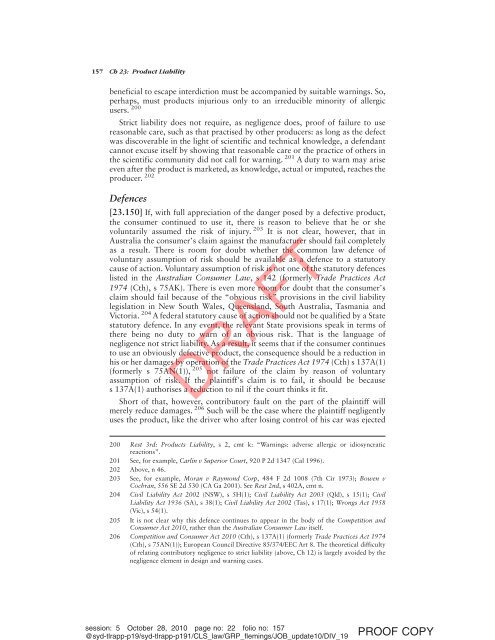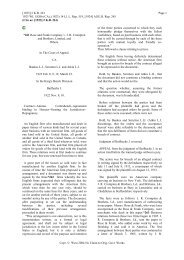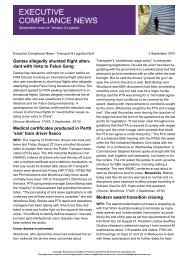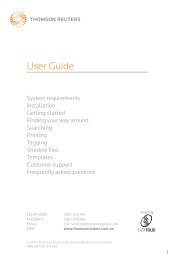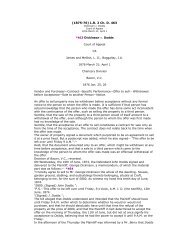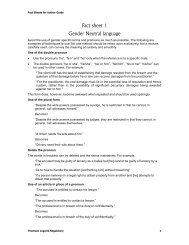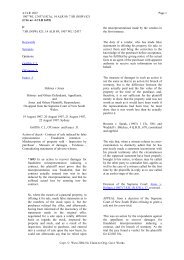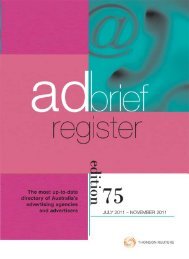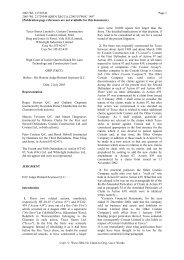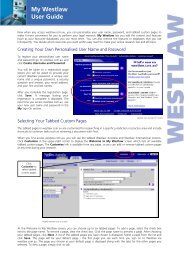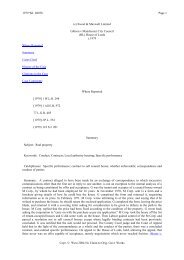Chapter 23: Product Liability - Thomson Reuters
Chapter 23: Product Liability - Thomson Reuters
Chapter 23: Product Liability - Thomson Reuters
You also want an ePaper? Increase the reach of your titles
YUMPU automatically turns print PDFs into web optimized ePapers that Google loves.
157Ch <strong>23</strong>: <strong>Product</strong> <strong>Liability</strong>beneficial to escape interdiction must be accompanied by suitable warnings. So,perhaps, must products injurious only to an irreducible minority of allergicusers. 200Strict liability does not require, as negligence does, proof of failure to usereasonable care, such as that practised by other producers: as long as the defectwas discoverable in the light of scientific and technical knowledge, a defendantcannot excuse itself by showing that reasonable care or the practice of others inthe scientific community did not call for warning. 201 A duty to warn may ariseeven after the product is marketed, as knowledge, actual or imputed, reaches theproducer. 202Defences[<strong>23</strong>.150] If, with full appreciation of the danger posed by a defective product,the consumer continued to use it, there is reason to believe that he or shevoluntarily assumed the risk of injury. 203 It is not clear, however, that inAustralia the consumer’s claim against the manufacturer should fail completelyas a result. There is room for doubt whether the common law defence ofvoluntary assumption of risk should be available as a defence to a statutorycause of action. Voluntary assumption of risk is not one of the statutory defenceslisted in the Australian Consumer Law, s 142 (formerly Trade Practices Act1974 (Cth), s 75AK). There is even more room for doubt that the consumer’sclaim should fail because of the “obvious risk” provisions in the civil liabilitylegislation in New South Wales, Queensland, South Australia, Tasmania andVictoria. 204 A federal statutory cause of action should not be qualified by a Statestatutory defence. In any event, the relevant State provisions speak in terms ofthere being no duty to warn of an obvious risk. That is the language ofnegligence not strict liability. As a result, it seems that if the consumer continuesto use an obviously defective product, the consequence should be a reduction inhis or her damages by operation of theTradePracticesAct1974 (Cth) s 137A(1)(formerly s 75AN(1)), 205 not failure of the claim by reason of voluntaryassumption of risk. If the plaintiff’s claim is to fail, it should be becauses 137A(1) authorises a reduction to nil if the court thinks it fit.DRAFTShort of that, however, contributory fault on the part of the plaintiff willmerely reduce damages. 206 Such will be the case where the plaintiff negligentlyuses the product, like the driver who after losing control of his car was ejected200 Rest 3rd: <strong>Product</strong>s <strong>Liability</strong>, s 2, cmt k: “Warnings: adverse allergic or idiosyncraticreactions”.201 See, for example, Carlin v Superior Court, 920 P 2d 1347 (Cal 1996).202 Above, n 46.203 See, for example, Moran v Raymond Corp, 484 F 2d 1008 (7th Cir 1973); Bowen vCochran, 556 SE 2d 530 (CA Ga 2001). See Rest 2nd, s 402A, cmt n.204 Civil <strong>Liability</strong> Act 2002 (NSW), s 5H(1); Civil <strong>Liability</strong> Act 2003 (Qld), s 15(1); Civil<strong>Liability</strong> Act 1936 (SA), s 38(1); Civil <strong>Liability</strong> Act 2002 (Tas), s 17(1); Wrongs Act 1958(Vic), s 54(1).205 It is not clear why this defence continues to appear in the body of the Competition andConsumerAct 2010, rather than the Australian Consumer Law itself.206 Competition and Consumer Act 2010 (Cth), s 137A(1) (formerly Trade Practices Act 1974(Cth), s 75AN(1)); European Council Directive 85/374/EEC Art 8. The theoretical difficultyof relating contributory negligence to strict liability (above, Ch 12) is largely avoided by thenegligence element in design and warning cases.session: 5 October 28, 2010 page no: 22 folio no: 157@syd-tlrapp-p19/syd-tlrapp-p191/CLS_law/GRP_flemings/JOB_update10/DIV_19PROOF COPY


